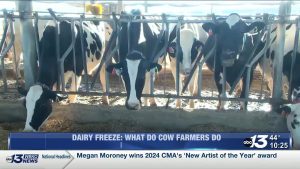Value-added products include cheese, paneer, ghee, yoghurt and probiotic drinks etc. These products are produced by alteration and enrichment via use of additives, microbial fermentation or simply mixing with liquid milk.
Value addition can be a great tool for doubling the farmer’s income, and making more profit out of liquid milk with the use of certain techniques. It can work as a tool for increasing the inclination of farmers towards dairy industry. With increasing consumer awareness in recent times, people are more aware regarding healthy nutrition and diet which has increased the market scope of value added functional dairy foods.
Need of value addition
Fast pace life
Lives are getting faster and busier; peoples are more opting for readymade dairy foods which can be easily purchased from supermarket. Peoples are not having much time for common activities of making homemade butter or ghee or even setting of curd and Lassi.
Healthier Lifestyle
People are becoming more and more health-conscious and opting for healthier diet options. Value added dairy products being a healthier diet option led to an increase in demand for value added products as compared to the raw product i.e., liquid milk. Products like Probiotic drinks which resolve digestive issues and improves intestinal health is a quite popular drink nowadays, which make a lot of impact on the overall growth of the value-added functional food industry.
Growing financial trends
Due to rise in buyer’s disposable income, tendency to buy more priced value-added products than liquid milk has been increased in recent times. People are developing a habit of eating out more often in cafe and restaurant’s which use more of value added products like paneer, cheese etc.
Reason for value addition of milk
There are various reasons to process milk into functional dairy products, such as the following:
- Dairy products have longer shelf life as compared to fresh milk.
- Problem of storage of fresh milk is resolved, as fresh milk is more perishable in nature and bulky to store.
- The demand of raw milk for sale is limited.
- Preserved value added functional food products can be transported to longer distances without spoilage as compare to fresh milk.
- Greater economic gain could be achieved.
Value-added Dairy Products
There is a lot of diversity in manufacturing or production of value-added dairy products, out of them some are easy to produce where as other require greater investment in terms of equipment, machinery, training and production time. Some of the common value-added dairy products has been listed below along with short discussion on each of them.
Cheese is quite popular, widely used value-added dairy product. Thousands of cheese varieties are being produced based on flavour, texture and ranging from soft cheeses (mozzarella, ricotta, etc.) to hard cheeses (cheddar, colby, swiss, etc.). Cheese type mainly depends on type of milk used, fat content, fermentation (bacteria or Mold type), processing pattern and ageing.
Yogurt is produced by fermentation of milk, by using bacterial cultures Lactobacillus bulgaricus and Streptococcus thermophilus. It is becoming more popular because of its health benefits on digestive system. According to European food safety authority (EFSA), yogurt should contain at least 108 CFU live starter microorganisms (Lactobacillus delbrueckii subsp. bulgaricus and Streptococcus thermophilus) per gram to achieve its health benefits. Flavoured and drinkable yogurts are the widely used yoghurt products.
Butter is water in oil semisolid emulsion made by churning of cream. Organic butter is becoming more popular these days which has been produced from the organic cream, from the cow or buffalo raised on the organic pasture. Salt or food colour may be added to butter. The butter is usually produced from the high percentage fat milk, whereas ghee is a clarified butter, produced by removing water and milk solids.
Ice cream is a very famous “frozen dairy dessert”. It is made with cream, sugar or its alternative, flavour or spice (vanilla or coca), and fruit or nut.
Bottled milk/flavoured milk, bottled raw milk gaining popularity these days among consumers. On farm bottling and sealing prevent chances of adulteration and give more consumer satisfaction. Glass bottles are healthier and eco-friendly option as compared to plastic bottles, as their cleaning and refiling is easy. Whereas flavoured milk is pasteurized or UHT treated milk added with sugar, flavoring and sometimes with food-grade colouring.
Value added functional Dairy products
Functional foods are the foods that provide some additional health benefit because of added functional bioactive compounds to it, beyond providing the basic nutrition. Value-added functional dairy products can be developed as per the requirements of various sections of the population, and there are added benefits. For e.g.
- Functional dairy products which can prevent or slower down muscular atrophy, bone degeneration and indigestion, in geriatric population/elderly people
- Protein-enriched functional dairy foods for growing kids, and children suffering from protein malnourishment.
- Lower lactose or lactose-free formulation/preparation for new-borns and individuals with lactose intolerance
- Whey protein supplements and Sports drinks for athletes and peoples associated with fitness/bodybuilding industry.
- Preparations rich in calories, minerals vitamin, etc. for pregnant/lactating and postmenopausal women’s.
- Low fat functional dairy products containing reduced fat or fat replacers for people suffering from obesity and cardiovascular diseases.
Probiotics
Probiotic are gut friendly microorganism/yeast preparation intended to provide health benefits to the person by improving the indigenous microflora in GI tract. Probiotics mainly contains Lactobacillus and Bifidobacterium. Group bacteria and may contains yeasts such as Saccharomyces boulardii., Predominantally contain lactobacilli group because of their tendency to grow rapidly and tolerate acidic environment. Probiotics have variety of health benefits in the body including, various gastrointestinal conditions like antibiotic assisted diarrhoea, constipation, irritable bowel syndrome (IBS), inflammatory bowel diseases, and diverticular disease. It prevents colic, and necrotizing enterocolitis, and sepsis in infants. Probiotics bacteria by colony formation on the intestinal wall and production of H2O2 and bacteriocins, prevent colonization of pathogenic bacteria, i.e. put ecologic barrier to the pathogenic bacterial proliferation.
Challenges
Value added functional dairy foods can be used as a great tool for providing maximum health benefits from milk and milk products. Value addition to fresh or raw milk can be done at medium or large-scale dairy farm, or at collection centre having continuous supply of raw milk from group of farms, but during these steps various challenges are there:
- Lack of awareness among producers, processors and consumers regarding importance of value addition
- Irregular supply of clean and quality milk for processing
- Insufficient incentives and financial aid to the dairy farmers and entrepreneurs to develop infrastructure for the processing at farm, village and regional levels
- Lack of Training and short courses to the dairy farmers and entrepreneurs at regular interval to develop the processing skills
- Infrastructure for proper marketing of the final product.
CONCLUSION
Milk is a nutrient rich liquid comprises of variety of nutritional components, many of which possess excellent functional and nutritional qualities and can be used to develop value-added functional dairy products. Value addition of milk will provide various health benefit to the society and boost the economy of the farmer and dairy industry simultaneously. Value addition can result in foreign exchange for the country if planned, processed and marketed judiciously following scientific principles. A short course or training may be required for interested candidate before entering into production venture. Trainings are provided by various agricultural institutes of ICAR and the state agricultural universities.
Authors
Dr Dinesh Sharma *
* Veterinary Surgeon (Government of Haryana)
Dr. Rajender Kumar **
** ICAR-NDRI, Karnal, Haryana

















